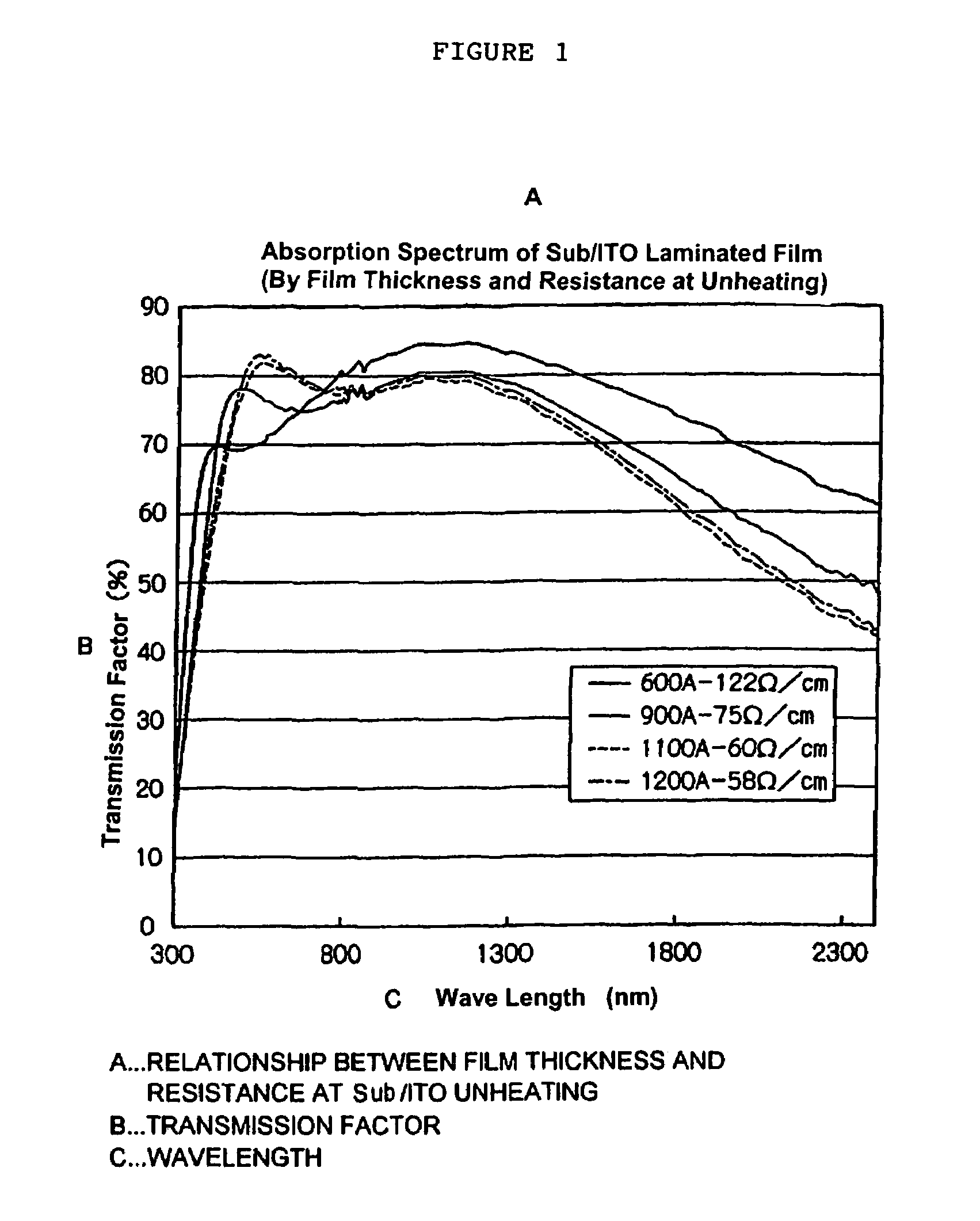Polysiloxane film and process for producing the same
a polysiloxane film, self-supporting technology, applied in the direction of chemistry apparatus and processes, transportation and packaging, coatings, etc., can solve the problems of thermoplastic polymer-based transparent films, prone to molecular chain orientation, and particularly serious orientation phenomena, etc., to achieve excellent light permeability and low birefringence
- Summary
- Abstract
- Description
- Claims
- Application Information
AI Technical Summary
Benefits of technology
Problems solved by technology
Method used
Image
Examples
application example 1
[0083]0.69 g of 1,4-bis(dimethylsilyl)benzene was added to 4 g of a 75 mass % toluene solution of polysiloxane [ViMe2SiO0.5]0.25[PhSiO1.5]0.75 resin with a GPC-determined molecular weight of approximately 1700 and the mixture was subjected to sufficient agitation.
[0084]After that, a complex compound made up of 1,3-divinyltetramethyldisiloxane and chloroplatinic acid was further added thereto so as to set the mass of platinum metal to 2 ppm relative to the solid matter mass of the above-mentioned mixture consisting of the above-mentioned polysiloxane and 1,4-bis(dimethylsilyl)benzene.
[0085]After spreading this casting solution on a glass substrate and allowing it to stand for about 1 hour at room temperature, it was cured by heating for about 2 hours at 100° C. and for about 3 hours at 150° C.
[0086]After that, it was left standing to allow it to cool down to room temperature and a polysiloxane film was obtained by peeling the cured product from the glass substrate.
[0087]The film was ...
application example 2
[0089]The film produced in Application Example 1 was heated for 2 hours at 200° C. and cooled down to room temperature, whereupon a Shimadzu spectrophotometer, the 3100PC, was used to measure its optical transmissivity, which was not less than 85% at 400˜700 nm. Next, the optical transmissivity of the film was measured using a polarizer, but no polarization dependency was observed. In addition, it was confirmed that the film exhibited no birefringence.
[0090]Next, the film was cut into strips with a width of 1 cm and a length of 10 cm, after which the Shimadzu Autograph tester was used to measure their tensile strength and Young's modulus under room temperature conditions at a speed of 60 mm / min, with a distance of 60 mm between the benchmark lines. The Young's modulus of the film was 1.5 GPa and its tensile strength was about 23 MPa, i.e. there was no change relative to the properties of the film prior to the heat treatment.
application example 3
[0091]0.69 g of 1,4-bis(dimethylsilyl)benzene was added to 3 g of polysiloxane [ViMe2SiO0.5]0.25[PhSiO1.5]0.75 resin with a GPC molecular weight of approximately 1700 and the mixture was subjected to sufficient agitation. The resultant mixture was liquid at room temperature.
[0092]Subsequently, the same platinum catalyst as the one used in Application Example 1 was added so as to set the mass of platinum metal to 2 ppm relative to the mass of the mixture of the above-mentioned resin and 1,4-bis(dimethylsilyl)benzene, and, furthermore, a hundred times more of 2-methyl-3-butyn-2-ol, in comparison with the mass of platinum metal, was added thereto and the mixture was immediately subjected to agitation.
[0093]After spreading the thus obtained mixture on a glass substrate and allowing it to stand for about 1 hour at room temperature, it was cured by heating for about 2 hours at 100° C. and for about 3 hours at 150° C.
[0094]Subsequently, it was left standing to allow it to cool down to room...
PUM
| Property | Measurement | Unit |
|---|---|---|
| wavelength | aaaaa | aaaaa |
| wavelength | aaaaa | aaaaa |
| tensile strength | aaaaa | aaaaa |
Abstract
Description
Claims
Application Information
 Login to View More
Login to View More - R&D
- Intellectual Property
- Life Sciences
- Materials
- Tech Scout
- Unparalleled Data Quality
- Higher Quality Content
- 60% Fewer Hallucinations
Browse by: Latest US Patents, China's latest patents, Technical Efficacy Thesaurus, Application Domain, Technology Topic, Popular Technical Reports.
© 2025 PatSnap. All rights reserved.Legal|Privacy policy|Modern Slavery Act Transparency Statement|Sitemap|About US| Contact US: help@patsnap.com



